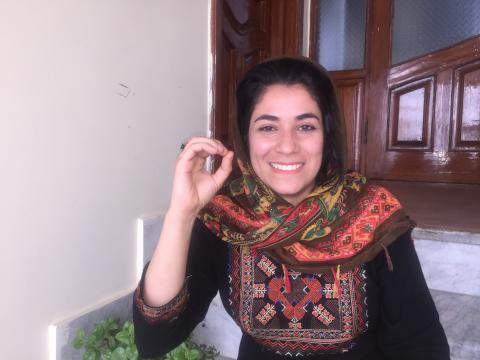Stop at Nothing to get to zero poverty - Global Week of Action 2015

In the last 15 years extraordinary progress has been made in reducing extreme poverty and improving child health and well-being. The Millennial Development Goals (MDGs) provided targets and ambition for the world to pursue in a unified effort to half global poverty. Progress made by the MDGs is the most successful global anti-poverty campaign in history.
Every day there are 17,000 fewer children dying of preventable causes compared to 1990. The number of under-five child deaths has been halved since 1990. Almost 100 million child lives have been saved since 1990, this includes 24 million newborns! The number of under-five child deaths has been halved since 1990. Almost 100 million child lives have been saved since 1990, this includes 24 million newborns!
As we approach the end of the MDGs and new development goals will be decided, we have the chance to build on the extraordinary progress that has been made in reducing extreme poverty and improving child well-being, and to set the direction for ensuring a fairer world for all children.
A world where the next generation can not only survive but thrive is possible. A world where the number of children dying from preventable causes is zero, not 6.3 million. A world where children going hungry is nothing but a memory. A world where children know nothing of abuse, violence, war or labour.
It is possible if individuals, corporations, organisations, leaders and governments stop at nothing to see that world become a reality. And the best place for them to start is with the post-2015 agenda. The past 15 years have shown us that the dream of a fairer world for all children is within sight.
During the Global Week of Action (4-11 May) millions of people will stand up and let their voices be heard advocating for improved child wellbeing. They will call on leaders to not waste this once-in-a-generation opportunity to deliver goals that end preventable child deaths, child hunger and all forms of violence against children.
To put an end to preventable deaths of children, leaders must:
Identify the most vulnerable children and provide them with resources
The easiest solution to identify the most vulnerable children is to provide them with a birth certificate. This will provide them with a legal identity and the rights to access services such as healthcare and education. This will make all children visible to the government and it will lead to action.
The world finally took action around the AIDS pandemic when the scale of the crisis became visible in the 1990s. However, throughout these years up until now, children have been dying, for example, from dehydration due to diarrhoea when they could be saved at the cost of only a few dollars’ worth of oral rehydration salts and zinc treatments. Largely due to inadequate local and national data, issues like this are as invisible as the HIV and AIDS crisis used to be. However, World Vision has seen again and again how gathering that data, even in small local efforts, leads to action to solve problems. If governments can bring such efforts to scale and also stop neglecting their civil registration systems, then there will be a transformation in how developing countries address the health of their populations.
Increase investment in quality, accessible health services with sufficient trained staff
The gap between those who have good access to life-saving health services and those who don’t remains unacceptably large. Once the most vulnerable children have been identified, leaders need to ensure these children have access to healthcare services. Evidence shows that countries with fewer than 23 physicians, nurses and mid-wives per 10,000 people are unable to adequately reach their people with essential health services. (source Killer Gap report: http://www.wvi.org/thekillergap)
Improve nutrition
Improving nutrition during a child’s first 1,000 days, from pregnancy up to age two, is one of the most cost-effective investments we can make to reduce preventable deaths of children. Giving access to the right types of food, education and exclusive breast-feeding in the first six months are ways which can contribute to the healthy development of a children and help them survive 5.
Listen to children
Leaders must involve all children, including the most vulnerable ones, along with their communities, and listen to what they have to say. Children are agents of change and their voices will lead to goals that better respond to their needs.
The most vulnerable children are the ones who are most likely to be ignored by leaders. But leaders should listen because they often have insights into their own situation. They can explain the challenges they’re facing and suggest solutions to overcome them.
Join the Global Week of Action
Be a hero, make a zero. Join millions in an expression of ZERO, add your support to the photo wall.
Take the 'We Will Stop At Nothing' pledge to support to call on our leaders to stop at nothing to get to zero.
Like Child Health Now on Facebook to support the Global Week of Action efforts of countries and people around the globe.